Don't settle for a partial view of your spine.
Ask your doctor to see the view of your spine in which you experience your problem -- sitting, standing, bending, or lying down.
Advantages of The Fonar UPRIGHT® Multi–Position MRI
1. Symptom–Specific Positional Scanning–Only With The Fonar UPRIGHT® Multi–Position™ MRI
 |  |  |  |  |  |
Advanced design allows the FONAR Upright® MRI to scan you in the position you experience your problem—sitting, standing, bending, leaning, as well as lying down. All other MRIs can only scan you while you’re lying down. 2. Scanning With The Weight Of Your Body On Your Spine And Other Joints
The Upright™ MRI allows all parts of the body to be imaged with the normal weight of your body on the spine and other joints—an advantage that leads to a more accurate diagnosis. Imaging your spine when it is fully loaded with the weight of your body, as compared to unloaded in a conventional lie–down MRI, is critical to an accurate diagnosis. As you can see by the following images, many back problems are “missed” when the spine is not bearing the weight of the body and not imaged in the positions the spine normally occupies.
A New Technology for Better Diagnosis
Now, a new technology is available that provides better diagnosis of your problem. Until now, all MRI exams were done with the patient lying down in a static position. But the Fonar Upright® Multi-Position MRI™ allows a dynamic MRI exam to be done in whatever position you experience your problem. Does positional imaging really make a difference? Yes, it does. The prestigious UCLA School of Medicine recently did a study that reveals the “miss rate” of static MRI, compared to patient problems detected with Dynamic™ MRI. The study was done using the Fonar Upright® Multi-Position™ MRI.
The Upright™ MRI allows all parts of the body to be imaged with the normal weight of your body on the spine and other joints—an advantage that leads to a more accurate diagnosis. Imaging your spine when it is fully loaded with the weight of your body, as compared to unloaded in a conventional lie–down MRI, is critical to an accurate diagnosis. As you can see by the following images, many back problems are “missed” when the spine is not bearing the weight of the body and not imaged in the positions the spine normally occupies.
A New Technology for Better Diagnosis
Now, a new technology is available that provides better diagnosis of your problem. Until now, all MRI exams were done with the patient lying down in a static position. But the Fonar Upright® Multi-Position MRI™ allows a dynamic MRI exam to be done in whatever position you experience your problem. Does positional imaging really make a difference? Yes, it does. The prestigious UCLA School of Medicine recently did a study that reveals the “miss rate” of static MRI, compared to patient problems detected with Dynamic™ MRI. The study was done using the Fonar Upright® Multi-Position™ MRI.
LANDMARK STUDY BY UCLA SCHOOL OF MEDICINE OF OVER 1,000 PATIENTS (1,302)
QUANTIFIES THE "MISS RATE" OF STATIC MRI*
The Findings Could Substantially Improve Surgical Outcomes For Back Pain
QUANTIFIES THE "MISS RATE" OF STATIC MRI*
The Findings Could Substantially Improve Surgical Outcomes For Back Pain
| L4-5 is the area of the lumbar spine, or lower back, where most back problems occur (“Miss Rate” 35.1%). L3-4 is the second most frequent location of back problems (“Miss Rate 38.7%). | ||||||
Table 1
| ||||||
% Spondylolistheses " Missed" by Static MRI
40° Flexion |
Overall "Miss Rate"
40° Flexion | |||||
Minimum Slip
|
L2-3
|
L3-4
|
L4-5
|
L5-S1
|
L1-2 to L5-S1
| |
3mm
|
30.8%
|
38.7%
|
35.1%
|
4%
|
18.1%
| |
4mm
|
33.3%
|
53.8%
|
17.9%
|
3.5%
|
12.3%
| |
10° Extension
|
10° Extension
| |||||
L2-3
|
L3-4
|
L4-5
|
L5-S1
|
L1-2 to L5-S1
| ||
3mm
|
25%
|
20.8%
|
14%
|
3.2%
|
8.9%
| |
4mm
|
33.3%
|
25%
|
4.2%
|
2.4%
|
5.0%
| |
| Table 2 | ||||||
| Position Eliciting Disc Bulge | % Cervical Disc Bulges Greater Than or Equal to 2mm "Missed" in the Neutral Sit Position But Seen on Flexion or Extension | |||||
| Flexion |
18.18%
| |||||
| Extension |
23.75%
| |||||
See Complete Study with Review of Findings at Bottom of this Page
Two Fonar Case Studies That Illustrate Problems "Missed" with Static MRI but Detected With Dynamic Upright MRI.
To schedule a scan or to learn more, call 1-888-NEEDMRI (1-888-633-3674)
Two Fonar Case Studies That Illustrate Problems "Missed" with Static MRI but Detected With Dynamic Upright MRI.
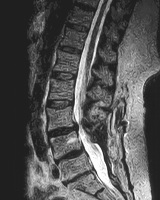 | 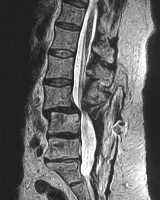 | 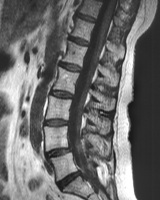 | 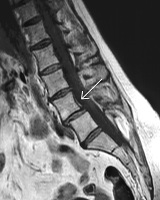 |
To schedule a scan or to learn more, call 1-888-NEEDMRI (1-888-633-3674)
Answers For Your Doctor
Many physicians are familiar with the advantages of the Fonar Upright® Multi–Position™ MRI. But the advanced technology is relatively new, so your doctor may say a conventional lie-down MRI is good enough. But no other MRI can see your problem in the position you experience it. Fonar images are indistinguishable from images made with conventional MRIs. Here’s how you can prove it to your doctor. Show him these side-by-side images and ask him to tell you which ones were made with the Fonar UPRIGHT® and which ones were made with a 1.5 Tesla MRI. To learn the correct answers, he or she is invited to call us toll-free at 1-888-NEEDMRI.
Many physicians are familiar with the advantages of the Fonar Upright® Multi–Position™ MRI. But the advanced technology is relatively new, so your doctor may say a conventional lie-down MRI is good enough. But no other MRI can see your problem in the position you experience it. Fonar images are indistinguishable from images made with conventional MRIs. Here’s how you can prove it to your doctor. Show him these side-by-side images and ask him to tell you which ones were made with the Fonar UPRIGHT® and which ones were made with a 1.5 Tesla MRI. To learn the correct answers, he or she is invited to call us toll-free at 1-888-NEEDMRI.
More Advantages of The Fonar UPRIGHT® Multi–Position MRI
3. Unrivaled Comfort; Watch TV During Your ScanYou simply walk in, sit down, and watch TV during your scan. You are not slid into the usual tube. This open comfort is especially good for people who are claustrophobic. | 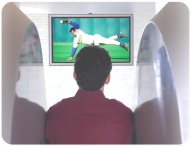 |
| 4. World’s First Radiation-Free Diagnosis and Evaluation of ScoliosisThe National Cancer Institute reports a 70% higher incidence of breast cancer among women who had scoliosis as children and were scanned multiple times a year to evaluate the condition. The Fonar Upright® MRI offers the first radiation-free monitoring and the end of later-life breast cancer due to overexposure to spine x-rays. | 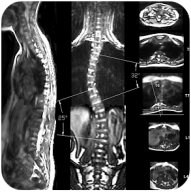 |
5. Scans Children, Who Sit In Their Mother’s Lap; Usually Requires No Anesthesia And Avoids Exposure Of Children To X-Rays
6.Scans Overweight Patients
|   |
| THE PROOF IS IN THE PICTURE™ More Cases Where the Patient’s Problem was “Missed” Lying Down But Seen UPRIGHT® Case 1 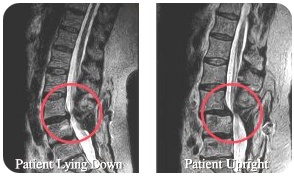
Here are two scans of a patient with low back pain. The patient had surgery but the pain and symptoms continued to get worse. The image on the left was made with the patient lying down. It shows a normal alignment of the vertebrae. The image on the right, which was done Upright®, revealed that the patient had a dramatic spinal instability that the lying–down scan did not reveal and that the first surgery did not address. Following visualization of the spinal dislocation seen by the UPRIGHT® MRI, the patient underwent surgery a second time. The patient has been pain free ever since.
| |
Related Links: | |
No comments:
Post a Comment